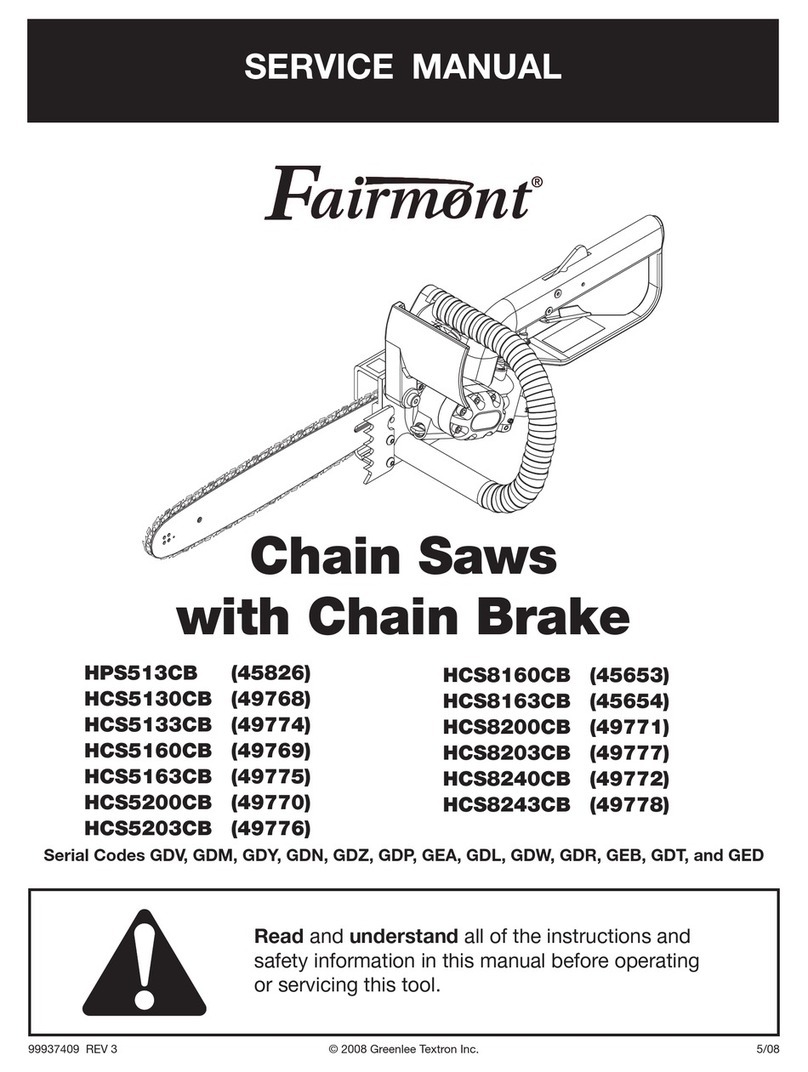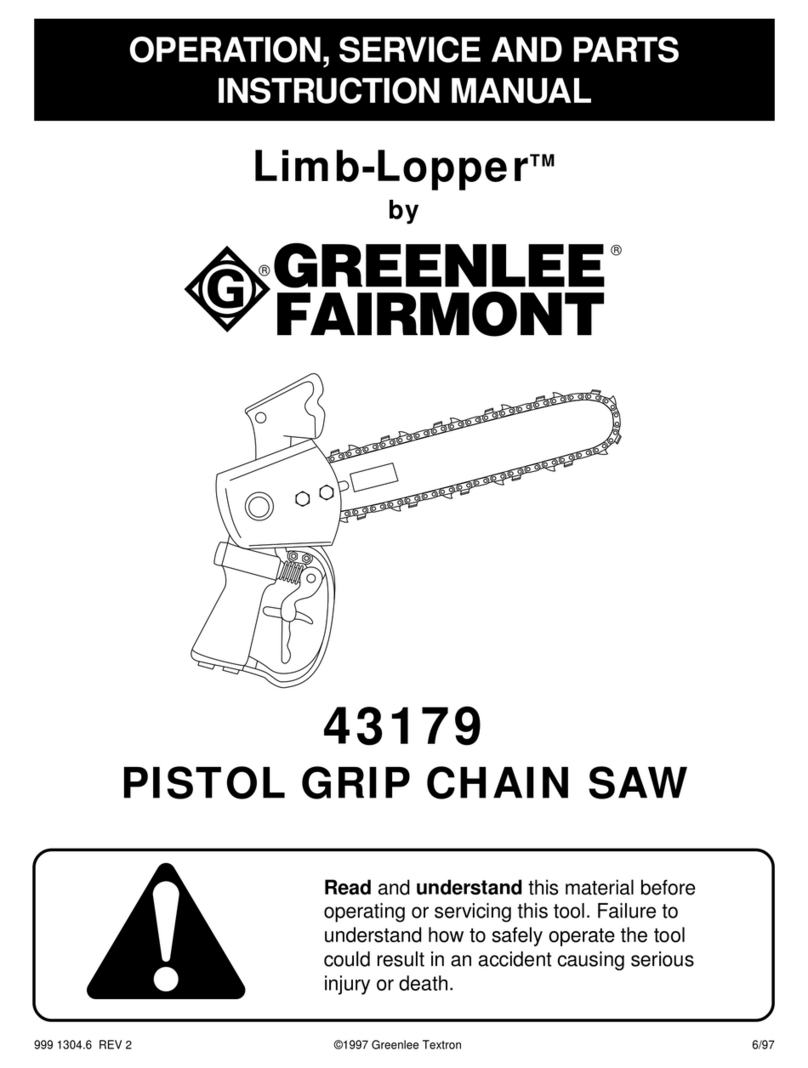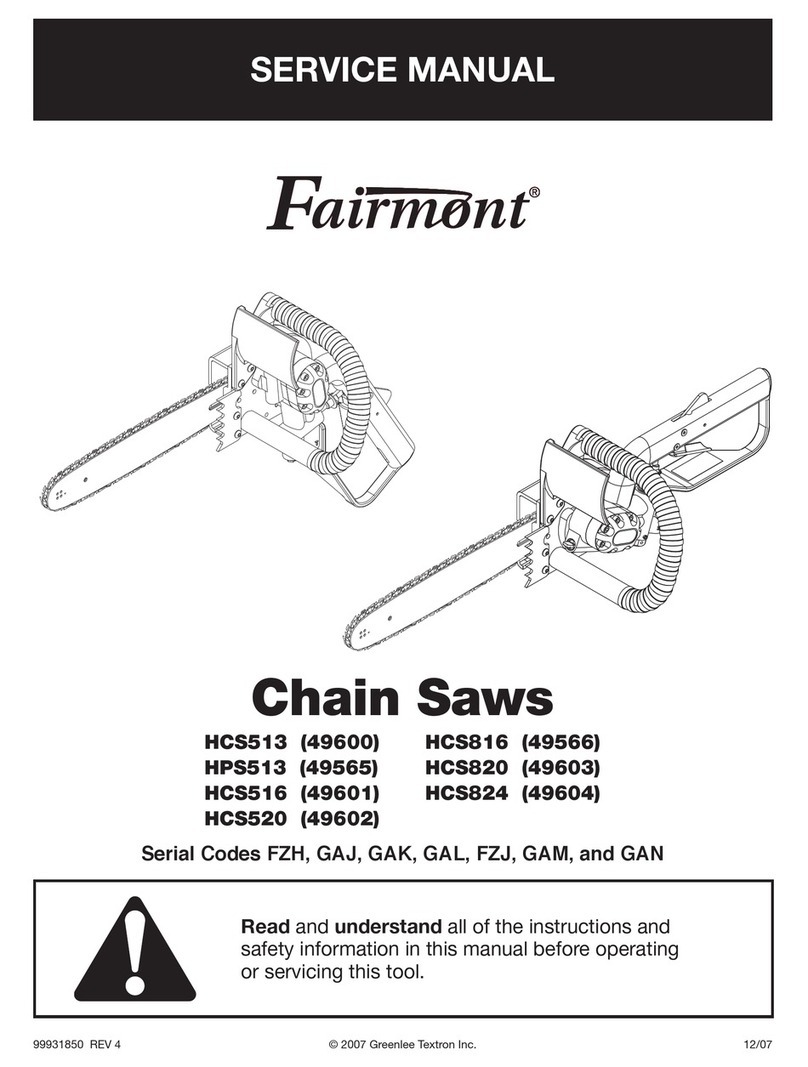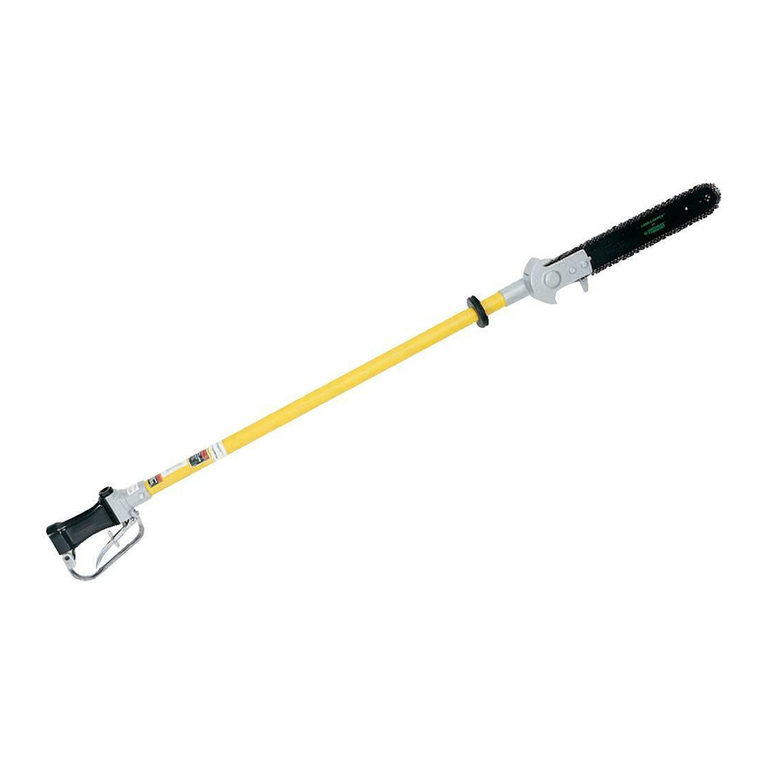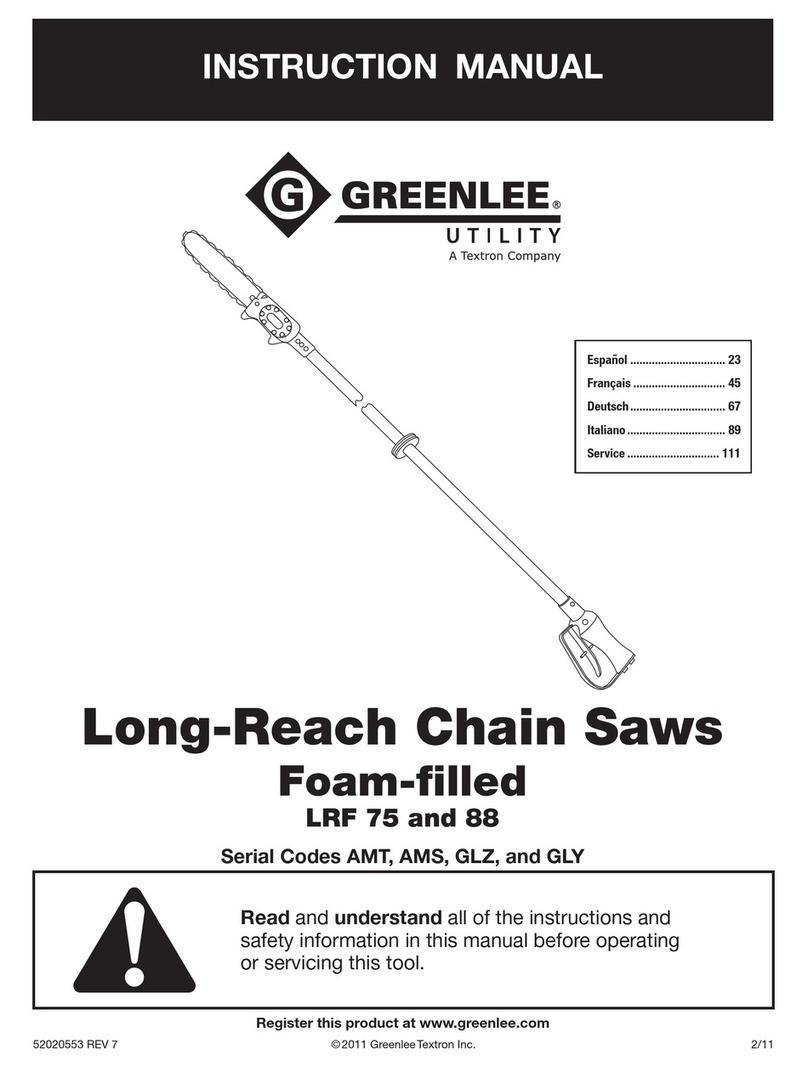
Chain Saws
Greenlee / A Textron Company 4455 Boeing Dr. • Rockford, IL 61109-2988 USA • 815-397-7070
2
Safety
Safety is essential in the use and maintenance of
Fairmont tools and equipment. This instruction manual
and any decals on the tool provide information for
avoiding hazards and unsafe practices related to the
use of this tool. Observe all of the safety information
provided.
This manual introduces some general tree-trimming
and felling guidelines. For more information on these
procedures, contact:
National Arborist Association
P.O. Box 1094
Amherst, NH 03031-1094
Phone: (603) 673-8952
Fax: (603) 672-2613
Website: www.natlarb.com
Purpose of this Manual
This instruction manual is intended to familiarize all
personnel with the safe operation and maintenance
procedures for the following products:
HCS513 (49600) Chain Saw
HPS513 (49565) Chain Saw
HCS516 (49601) Chain Saw
HCS520 (49602) Chain Saw
HCS816 (49566) Chain Saw
HCS820 (49603) Chain Saw
HCS824 (49604) Chain Saw
Keep this manual available to all personnel.
Replacement manuals are available upon request at
no charge at www.greenlee.com.
Other Publications
Tool Owners / Users
Specications and Parts: Publication 99931842
Fairmont Authorized Service Centers
Repair Manual: Publication 99931850
•
•
•
•
•
•
•
All specications are nominal and may change as design
improvements occur. Greenlee Textron Inc. shall not be liable for
damages resulting from misapplication or misuse of its products.
Super Spool™ is a trademark of Greenlee Textron.
Loctite®and 242®are registered trademarks of Loctite Corporation.
KEEP THIS MANUAL
Table of Contents
Description .................................................................... 2
Safety ............................................................................ 2
Purpose ......................................................................... 2
Other Publications......................................................... 2
Important Safety Information .....................................3–5
Identication.................................................................. 6
Chain Saw Basics:
Hazard Prevention ..................................................7–9
Compression and Tension ......................................... 9
Cutting Techniques .................................................. 10
Handle Adjustment...................................................... 11
Setting the Super Spool™........................................... 12
Hoses and Fittings ...................................................... 12
Hose Connections....................................................... 12
Typical Setup............................................................... 12
Operation................................................................13–14
Maintenance:
Schedule.................................................................. 15
Checking and Setting the Automatic Chain Oiler .... 15
Saw Chain and Bar Maintenance .......................16–17
Sharpening the Saw Chain .................................18–19
Troubleshooting......................................................20–21
Description
Fairmont Chain Saws are hydraulically powered
cutting
tools intended for pruning, limbing, and felling
operations.
Powered by a rugged, direct-drive gear motor, this
type of saw provides extraordinary cutting power for
trimming and cutting from an aerial device or from the
ground.
This saw can be customized in two ways. First, the
control handle can be set to different positions —
horizontal, 30° and 60° — for the benet of the operator.
Second, the blade and bar can be replaced with a blade
and bar of a different length or pitch to adapt to various
cutting situations. For blade-and-bar combinations that
are compatible with this saw, see Accessories in the
Specications and Parts manual.
The Greenlee Fairmont Super Spool™ allows these saws
to be used on either Open-Center or Closed-Center
hydraulic systems.
Super Spool™ is protected by U. S. Patent No. 4548229.
